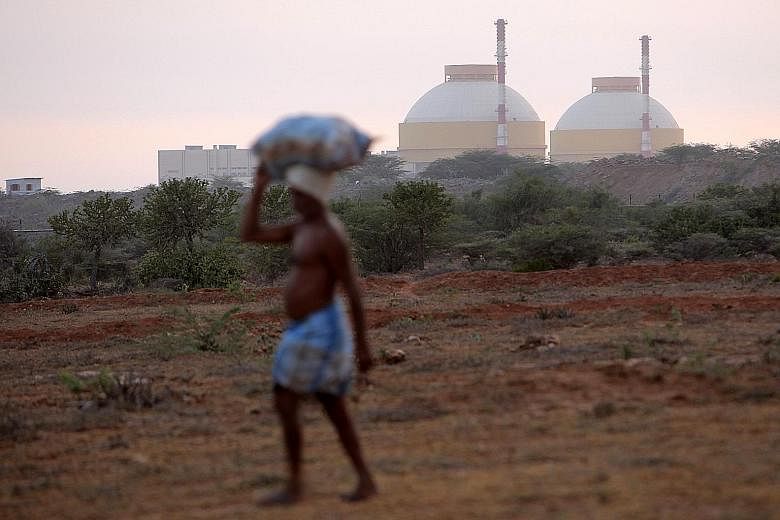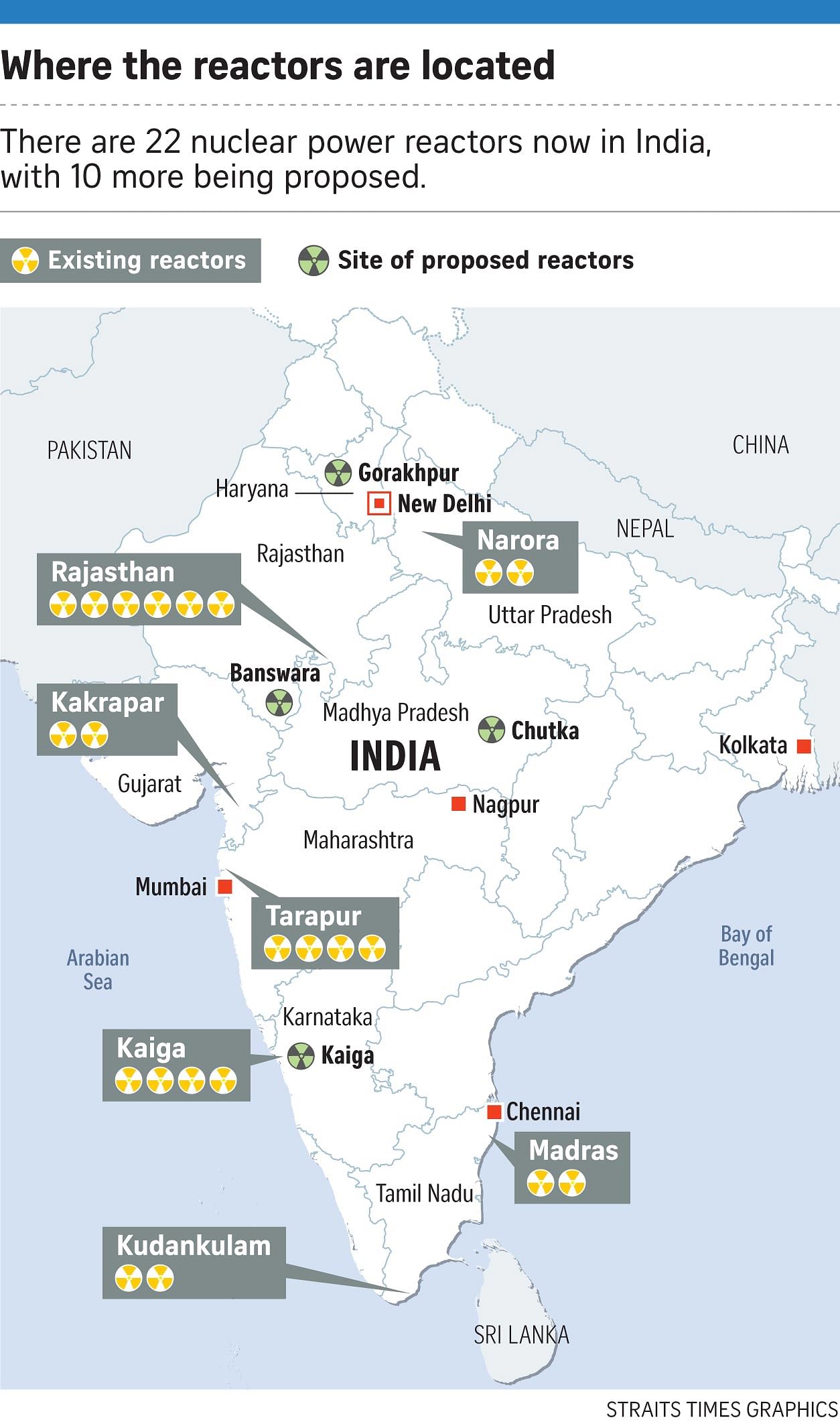India will build 10 nuclear reactors as it seeks to boost domestic manufacturing and ramp up energy production in a country where more than 300 million people still do not have access to electricity and power cuts are common.
The Cabinet on Wednesday approved the plan for 10 domestically built pressurised heavy-water reactors with a combined capacity of 7,000MW, in a shift away from foreign collaborations with countries such as the United States and France to developing the domestic market.
Electricity generated by nuclear power in India makes up only about 3.5 per cent of total energy production from different sources.
India currently has 22 nuclear reactors producing 6,780MW of power. Another 6,700MW will be added when units under construction are completed by 2021-2022.
The government said in a statement the new reactors will be built domestically and will be part of the "Make in India" initiative to boost domestic manufacturing. It did not give a timeline for the reactors.
"With manufacturing orders (going) to domestic industry, it will be a major step towards strengthening India's credentials as a major nuclear manufacturing powerhouse," Power Minister Piyush Goyal said in a briefing.
He linked the move to efforts to ease the impact of climate change, saying it supported India's commitment to sustainable development and energy self-sufficiency.
-
33,400
Number of new jobs that will be created with the decision to build 10 nuclear reactors.
$15b
Value of manufacturing orders that will be generated.
The government expects the move to create 33,400 jobs and generate over 700 billion rupees (S$15 billion) in manufacturing orders.
India has been building up an indigenous nuclear programme with some help from Russia since it faced international sanctions for carrying out nuclear tests in 1974 and 1998.
A 2008 civilian nuclear deal with the US followed by a waiver from the Nuclear Suppliers Group saw India gaining access to the nuclear energy market and getting into initial agreements with countries, which ranged from the setting up of nuclear reactors to uranium imports. But the collaboration with the US has run into uncertainty since Westinghouse, owned by Toshiba, filed for bankruptcy in March. A deal with France to set up six reactors has stalled over pricing.
Nuclear experts say the domestic push comes amid these uncertainties, including the difficulty India is facing to join the Nuclear Suppliers Group, which controls international nuclear trade. China has expressed concern about India because it is not a signatory to the Non-Proliferation Treaty.
The new reactors will be built in the states of Haryana, Rajasthan, Madhya Pradesh and Karnataka.
"Even if it's not the most advanced technology, we have the capacity to do it within India. We still have the option to collaborate with countries like Russia and France," said Dr Rajeswari Pillai Rajagopalan, who heads the Nuclear and Space Policy Initiative at the Observer Research Foundation.
Others noted, however, that even with the 10 new reactors, the government's target of 63,000MW by 2032 will not be reached.
"There may be an argument for going slow on nuclear," said Professor R. Rajaraman of Jawaharlal Nehru University. "But at the same time, we are not relying on outside people to do it (build nuclear reactors).''


